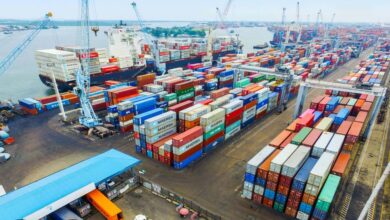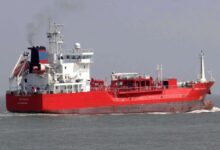
The Managing Director/ Chief Executive Officer of NLNG Shipping and Marine Services Limited (NSML), Abdulkabir Ahmed has said regulatory measures, technological innovations, operational strategies, and collaboration, are critical to reducing the impact of Greenhouse Gas (GHG)emissions and move towards a more sustainable future for the shipping industry.
Speaking as a panelist at the 2024 World Maritime Day celebration on ‘Mitigating Greenhouse Gas Emission (GHG) in Shipping: Challenges, Opportunities & Regulatory Frameworks’ he said the shipping industry accounts for the transportation of 90% of the world’s goods which is highly carbon intensive and is responsible for approximately 3% of global emissions.
He added that carbon dioxide, methane, nitrous oxide and sulphur dioxide are common emissions in the shipping industry while gases contribute to climate change and global warming phenomenon.
Abdulkabir noted that GHG emissions from the shipping industry has direct and indirect health impacts on human populations globally.
“Shipping emissions contribute to fine particulate matter and nitrogen oxides, leading to respiratory and cardiovascular diseases. Studies estimate thousands of premature deaths annually due to shipping-related air pollution”
“Climate change leads to an increase in the frequency and severity of extreme weather events, such as hurricanes, floods, and heatwaves, which pose significant health and safety risks
“Rising sea levels and extreme weather events can cause extensive damage to coastal infrastructure, including ports, which are vital for international trade. The decline in marine biodiversity and fish populations affects the fishing industry, while changes in marine environments can impact tourism, both of which are crucial economic sectors for many coastal communities”
Speaking further, the NSML MD stated that managing Greenhouse Gas Emissions requires regulatory measures, operational strategies, technological innovation and collaboration and partnership.
“The International Maritime Organisation (IMO), in recognition of the importance of the global maritime industry in the drive for decarbonization and reduction of GHG, have come up with regulations that will ensure a significant reduction in the carbon emissions target from shipping”
“Implementing effective operational strategies can further aid in the reduction of GHG emissions (Slow Steaming, Optimized Routing and Hull & Propeller Maintenance)”
“Advancements in technology offer significant potential for reducing GHG emissions in the shipping industry (Alternative Fuels, Energy efficient propulsion systems and Exhaust Gas Cleaning Systems- Scrubbers)”
“It is important to foster collaboration among industry stakeholders to ensure the successful reduction of GHG emissions (Public-Private Partnership, Industry Associations and Research & Development)”
He identified the regulations impacting marine propulsion and GHG Emission which includes the International Maritime Organization (IMO) and the European Union (EU) .
“The IMO has a target to reduce CO2 emissions per transport work by at least 40% by 2030, and 70% by 2050, compared to 2008. The IMO has also targeted the reduction of GHG emissions from international shipping by at least 50% in 2050 compared to 2008”
“The EU has set a target of reducing GHG emissions by 55% in 2030. They have also planned to reach carbon neutrality by 2050”
Ahmed explained that whilst there are multiple pathways and opportunities to drive GHG emission intensity reduction, challenges abound to effective compliance.
The opportunities, according to him include: “use of alternative fuels with lowercarbon footprint and propulsion systems, energy-efficient technologies like optimized hull design, efficient propulsion systems, waste heat recovery, air lubrication, digitalization & Data analytics, sustainable Shipping practices & operations”
“The challenges are regulatory complexities, technological barriers, economic constraints,Infrastructure limitations”
The NSML boss pointed that GHG Emission in Shipping & Marine Operations is both structural and operational and this calls for a structural operational change in shipping & marine operations to meet the regulatory requirements for GHG intensity in the short, medium and long term.
“Traditional fuels used for propulsion in ships and marine crafts account for the largest contribution of GHG emission in shipping. Account for 90% of shipping emissions, primarily from bunker fuel.Hull design, operations contribute to emission” he said.











